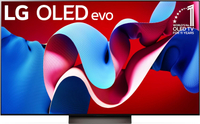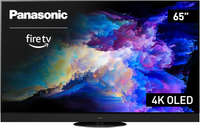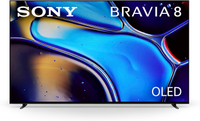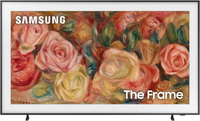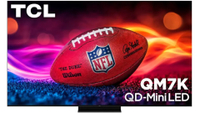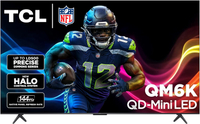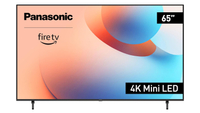Best 65-inch TVs in 2025: expert tested OLEDs, Mini-LEDs and QLEDs
We've tested years' worth of 65-inch TVs — here's what you should buy right now
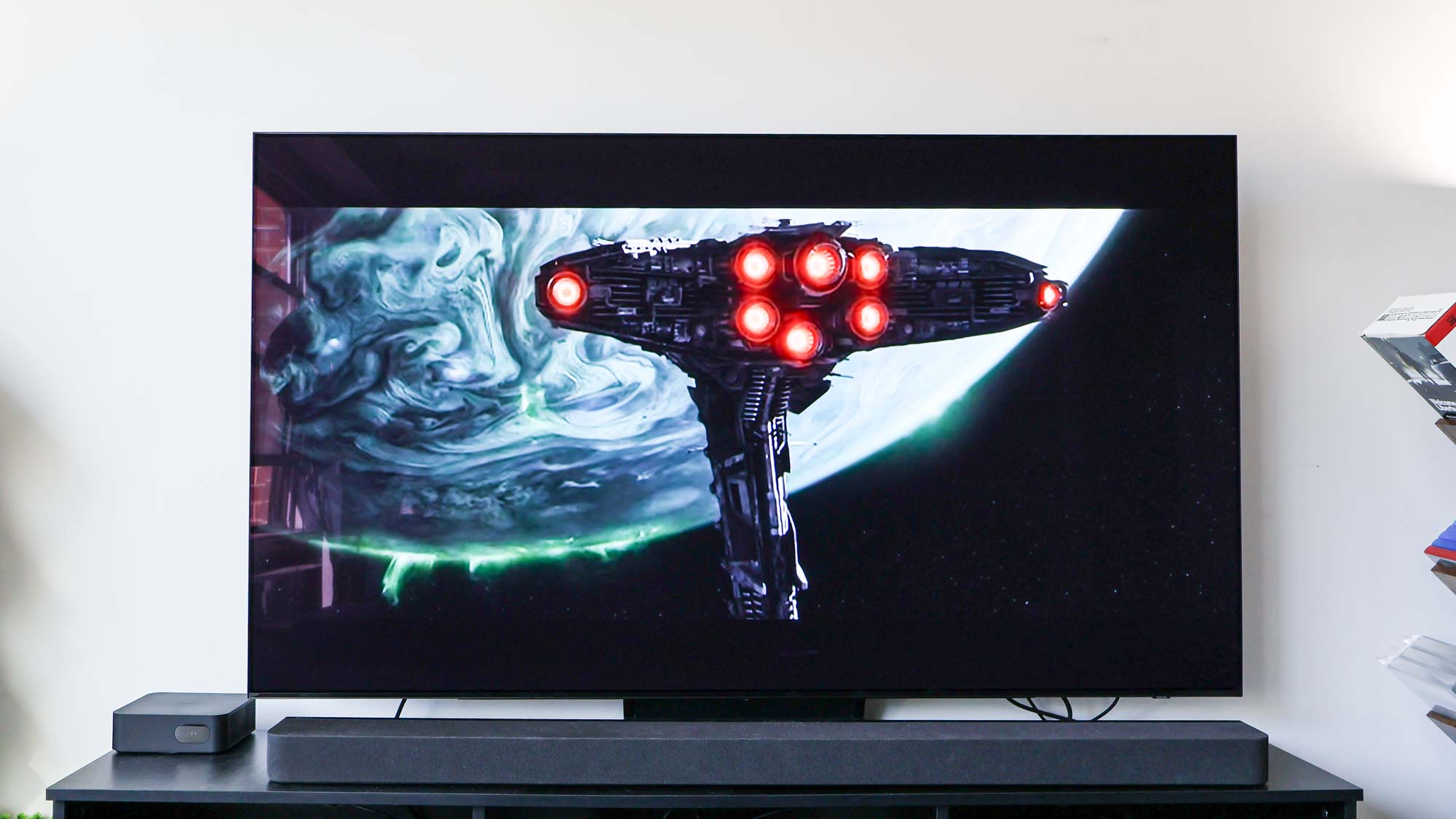
After over ten years of testing and reviewing popular TVs, I've learned a thing or two about the best 65-inch TVs. Picture quality is paramount. But you also need to consider the availability of certain features like Dolby Vision/Dolby Atmos and price. If you haven't noticed, 65-inch TVs can cost thousands of dollars. The good news is that they don't have to, however.
That's why I'm here to help get to the bottom of the best 65-inch TVs available today. It's a varied bunch: There are brilliant, top-tier OLEDs, mid-range Mini-LEDs, and affordable QLEDs under $500. But I'm familiar with all of them — from their best features to their hidden shortcomings.
65 inches is the most popular screen size for good reason. 4K TVs at the 65-inch size point represent the best choice for most living rooms, as they're best viewed from a distance of between six and nine feet. Right now, the best TV for most folks is the Hisense U8N Mini-LED TV, but there are picks for every lifestyle and budget, too.
The quick list
The best 65-inch TVs in 2025: quick list
Why you can trust Tom's Guide
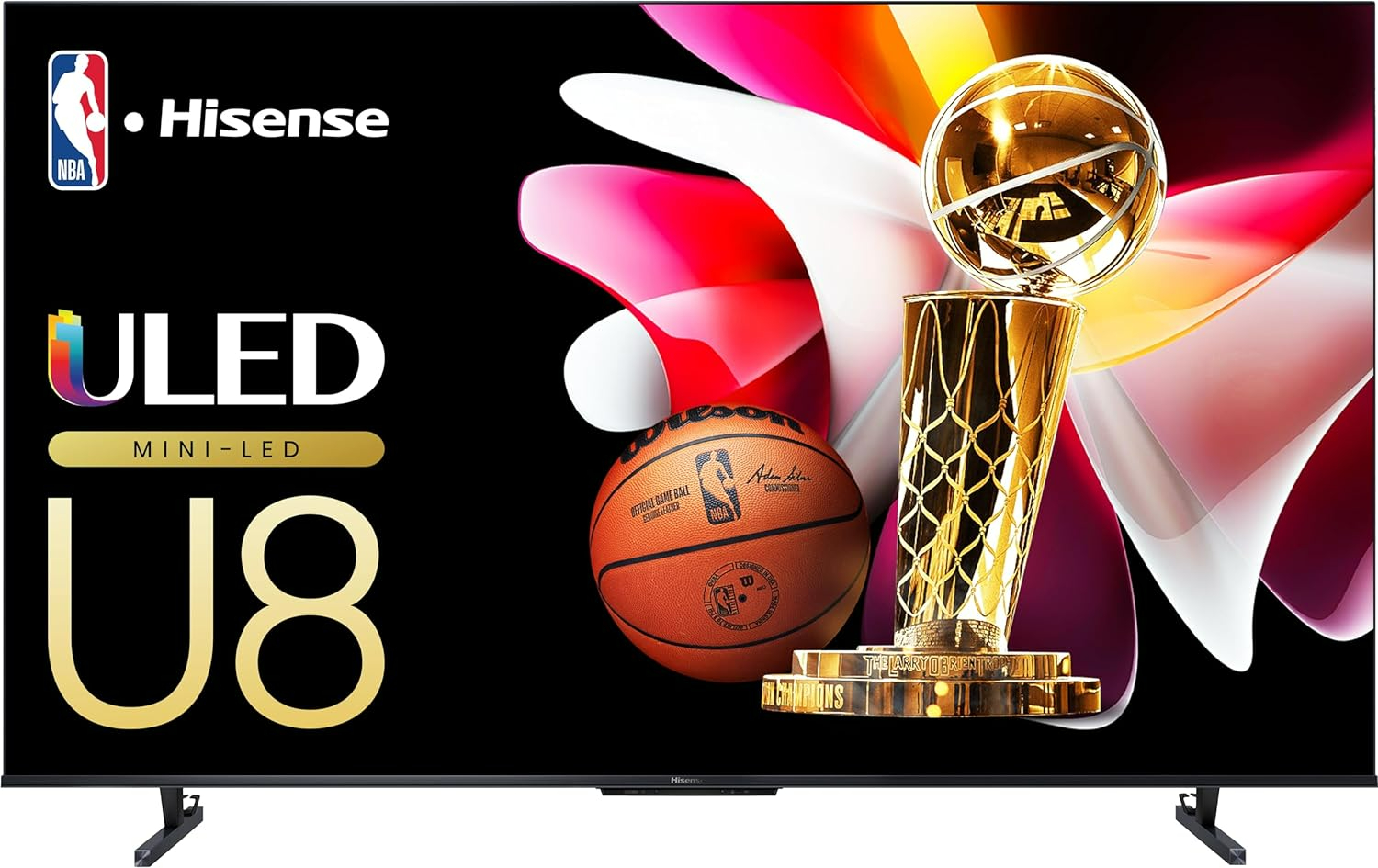
Like its predecessor, the 65-inch U8N is a fantastic TV at a reasonable price. It delivers class-leading brightness and color saturation for right around $1,000.
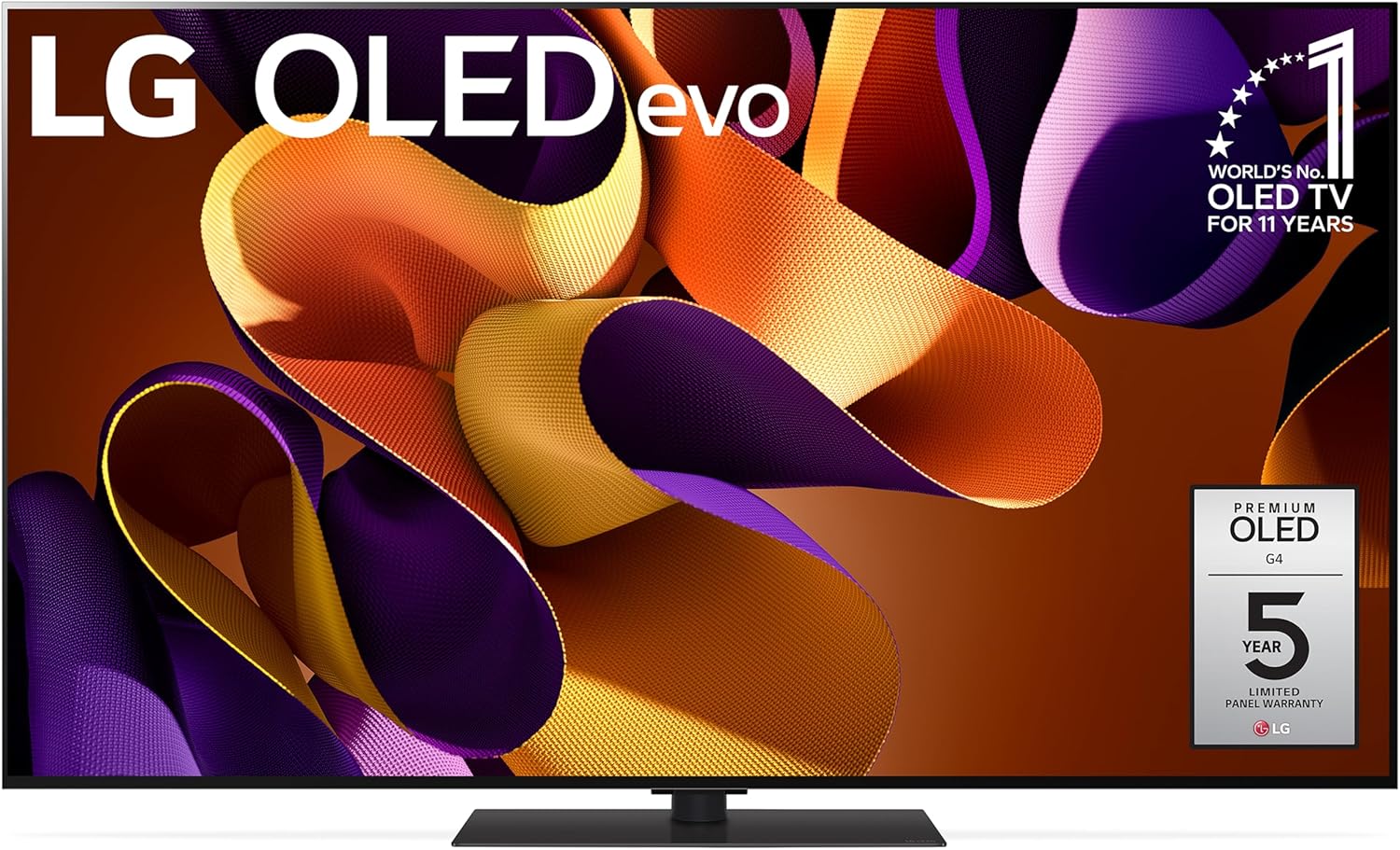
The 65-inch LG G4 OLED is more costly than the Hisense U8N by a wide margin (it's a premium OLED TV, after all) but the tradeoff is better contrast and color accuracy. If you want the best 65-inch TV at any price, the G4 is it.
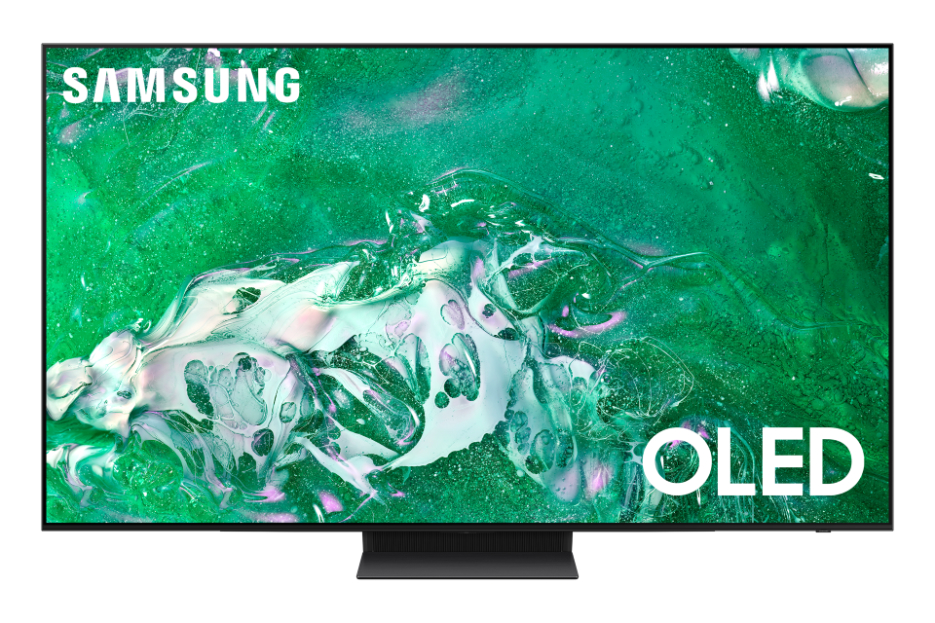
The Samsung S90D delivers upper levels of OLED performance at a very affordable price. It's my go-to recommendation for someone who wants to get all the advantages of OLED but doesn't need the whole suite of customization features.
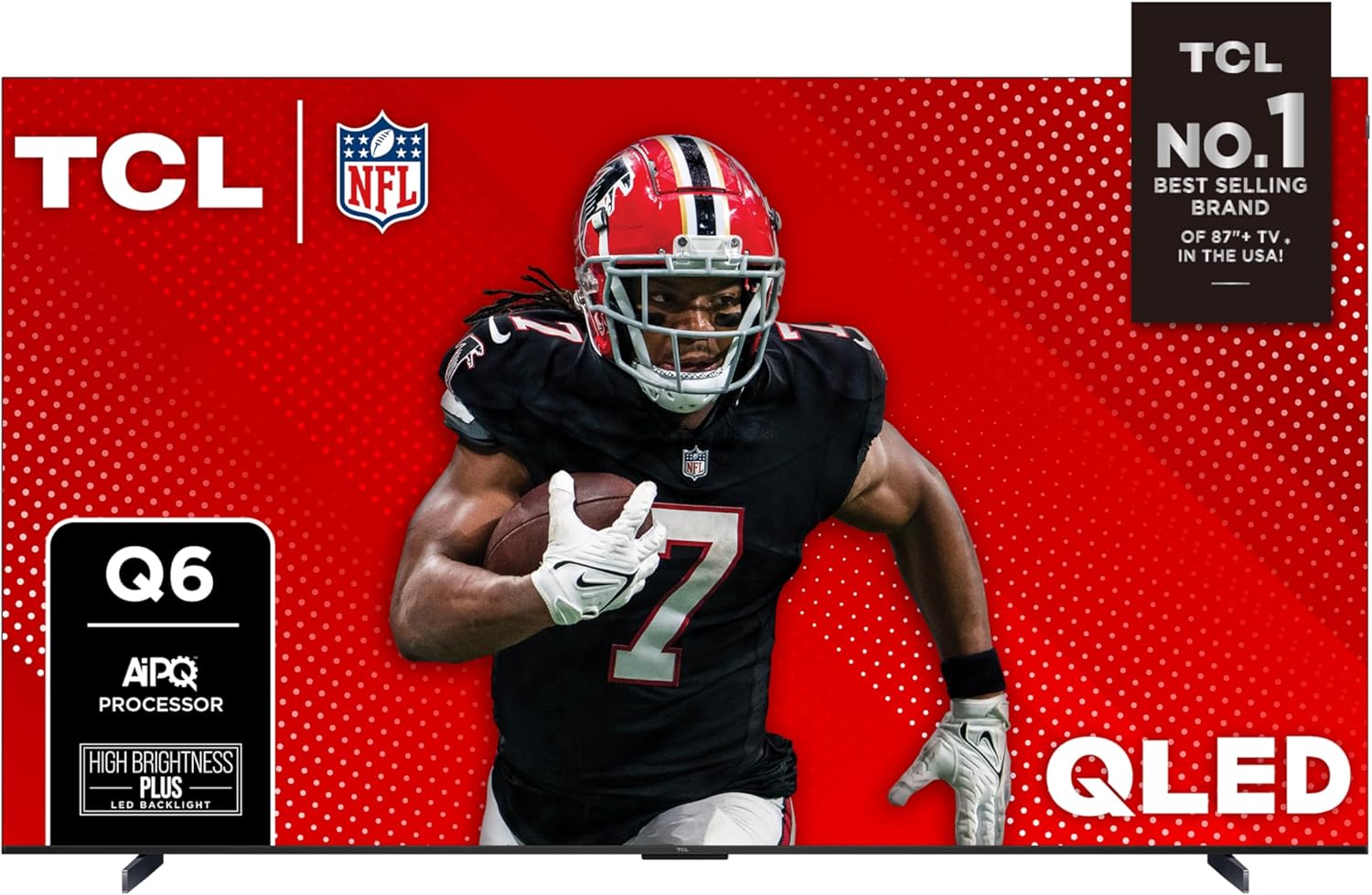
The TCL Q6 is a decent performer with wide appeal due to its easy-to-use, built-in smart platform and low price. Right now, a 65-inch version is priced below $500, making it a great option for those shopping for a large TV at a friendly price.
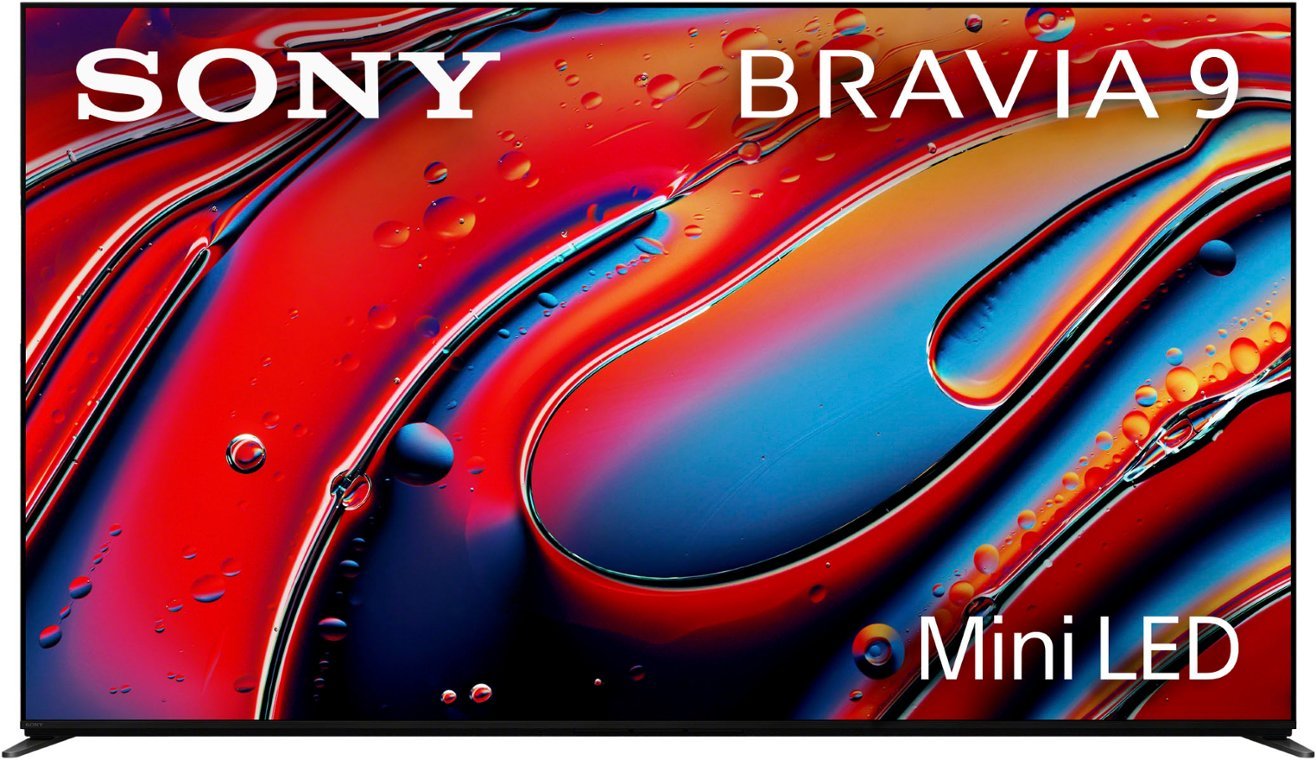
The most impressive Mini-LED TV is Sony's top-tier Bravia 9. It offers a perfectly balanced picture that cinephiles are going to adore, plus great motion processing for sports afficionados, too.
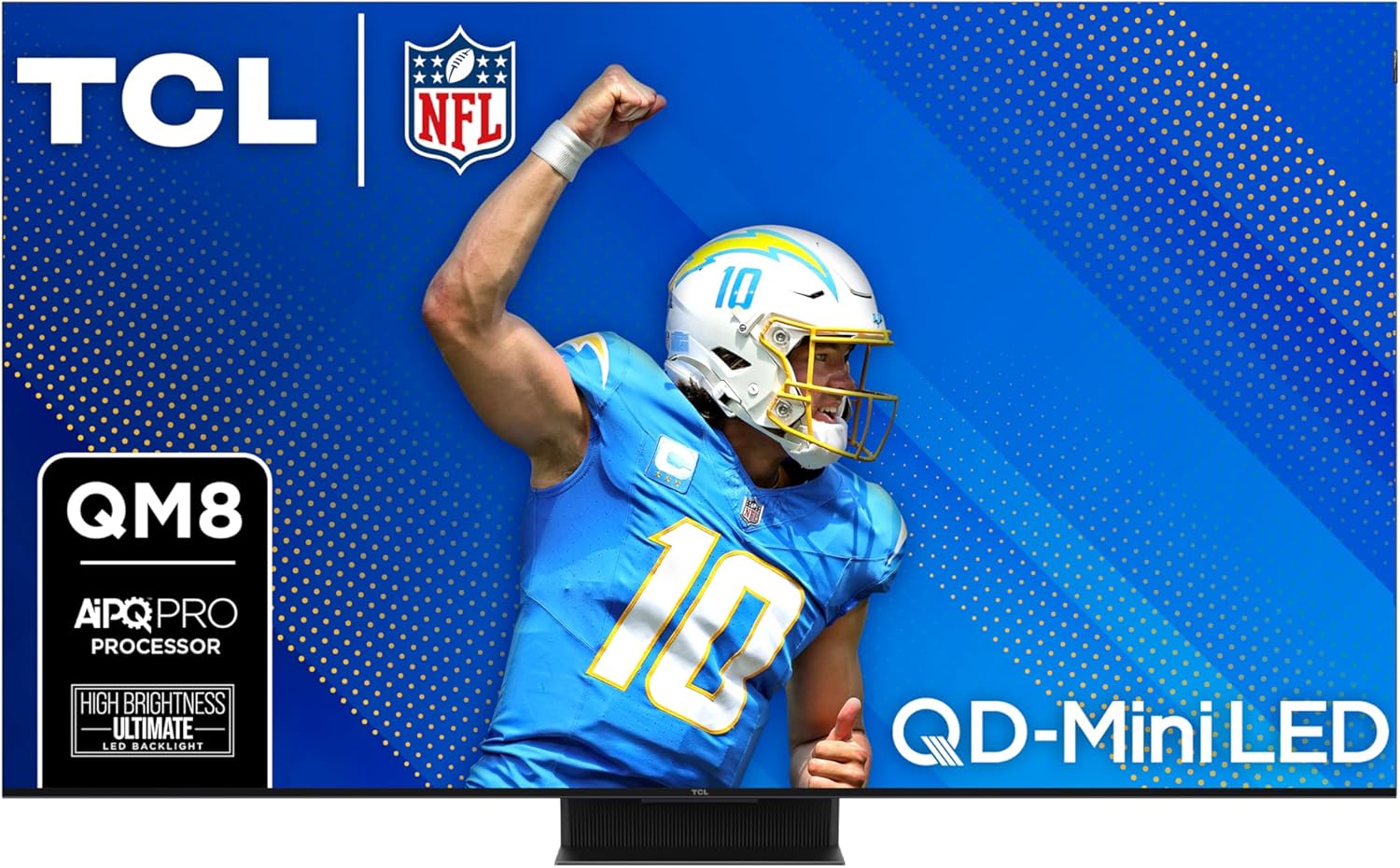
Having tested both, I don't think the QM8 delivers quite the same performance as the Hisense U8N, but thanks to its excellent backlight system it's still one of the best TVs under a grand.
About the author

My name's Nick and, for over a decade, I have been covering 65-inch TVs for major tech publications. Before I became Tom's Guide's Managing Editor of TV & AV, I was formerly the Senior Editor, TV and AV at TechRadar. Before my days in journalism, I helped folks just like you at a local Best Buy working in the TV department.

My name is Michael, and I’ve evaluated well over one hundred TVs in my day. The vast majority of these TVs have been 65 inches. My last TV was a 65-inch model, my current TV is a 65-inch model, and I'm almost certain that my next TV will be a 65-inch set, too.
The best 65-inch TVs you can buy today
Best 65-inch TV
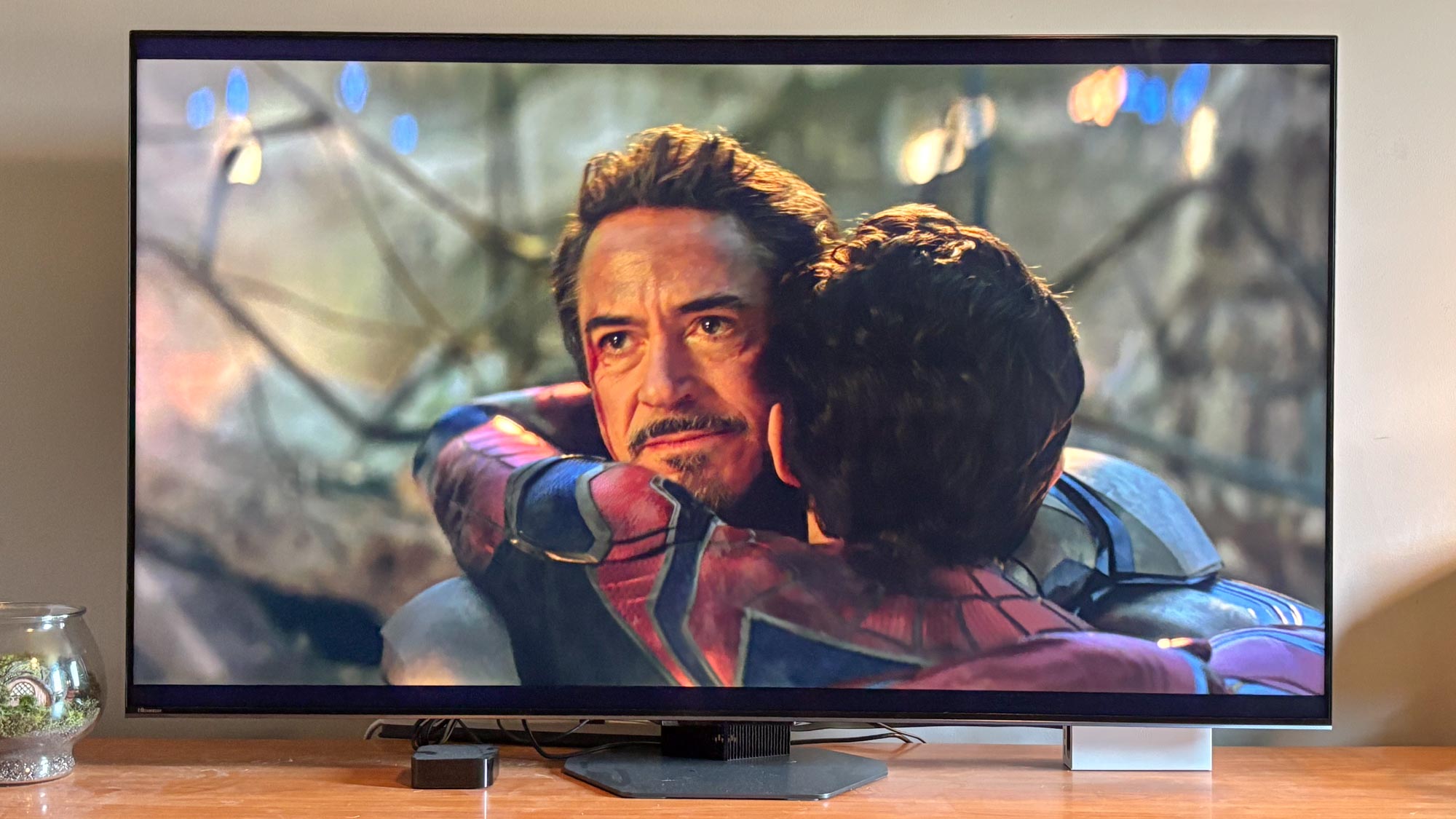

Specifications
Reasons to buy
Reasons to avoid
Everyone shopping for a 65-inch TV wants (nearly) the same thing: Good picture quality at a reasonable price. Yes, there are TVs that you could drop a few thousand on that will look wonderful (like the Sony A95L OLED) but most folks simply want a screen that works well, looks impressive and doesn't break the bank.
The Hisense U8N is that TV. It's a cutting-edge Mini-LED TV with several thousand contrast control zones for the best possible black levels while maintaining a peak brightness over 2,000 nits. It sports all of the essential streaming services on-board with its built-in Google TV smart platform, and it supports both Dolby Vision and the latest VRR technology. Add on top of all that a built-in ATSC 3.0 tuner that makes this TV capable of grabbing NEXTGEN TV content from over-the-air.
In our test results, the Hisense U8N delivered a peak brightness of 3,296 nits for some of the best-looking HDR content we've seen at this price range while covering 82.07% of the widest Rec2020 color gamut. It had slightly higher input lag than we'd like to see (13.1ms) but it was still very much under the 20ms needed for smooth gameplay. Finally, its color accuracy out of the box wasn't the best of any TV, but that's fixable with a few tweaks.
There are some slight hiccups in performance — older HD/SDR content doesn't look as good here as it will on, say, Samsung or Sony TVs with the newest AI-driven upscaling algorithms — but, for the price, you won't find any better option.
Read our full Hisense U8N Mini-LED TV review.
Best OLED TV
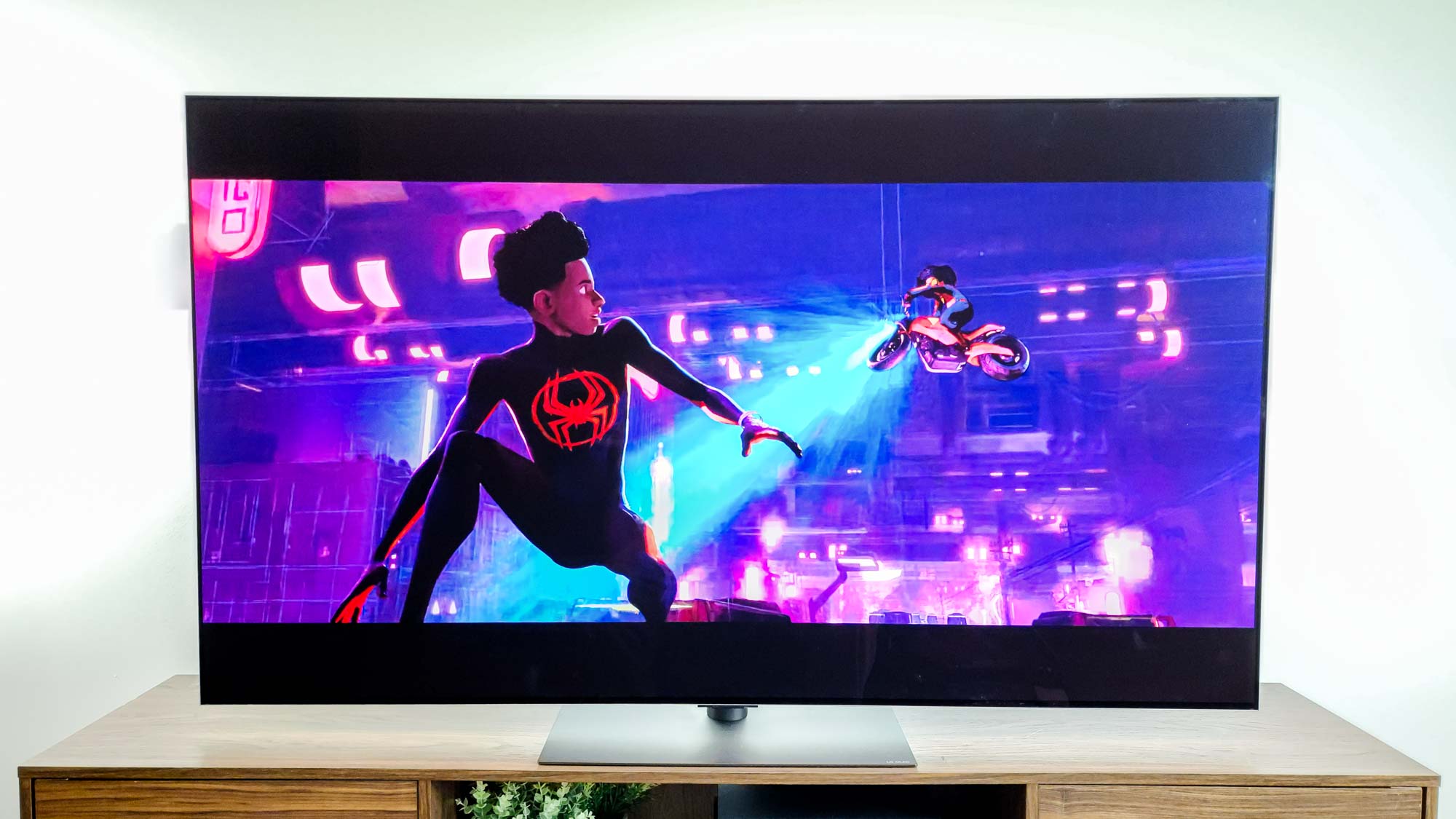

Specifications
Reasons to buy
Reasons to avoid
There are a lot of 65-inch OLED TVs to pick from, but if you're going to get one, I think the LG G4 OLED is the one to go for. Not only does this model come with a stand (something you would've had to buy separately in previous years), but it also offers the best performance of any LG OLED TV yet thanks to its next-gen META panel. Thanks to LG Display's latest Micro Lens Array technology, the G4 can get brighter for longer than any other LG OLED while still keeping colors accurate.
We tested the 65-inch version of this TV and its numbers spoke for themselves. SDR brightness might've only peaked at 431 nits, but HDR was just shy of 1,500 nits — surprisingly high for an OLED screen. Color accuracy (measured by Delta E) was a crazy low 1.4041, which means that the G4 was one of the most accurate TVs we've ever tested. (The closer a Delta E score is to 0, the more accurate its colors are.) Finally, its UHDA-P3 and Rec2020 color gamut coverages of 97.17% and 72.91% are nothing to sneeze at, either. The Hisense U8N does perform slightly better in these areas, but it's relatively close overall.
If you want a premium 65-inch OLED, the LG G4 is this year's top choice.
Read the full LG G4 OLED review.
Best under $1,500
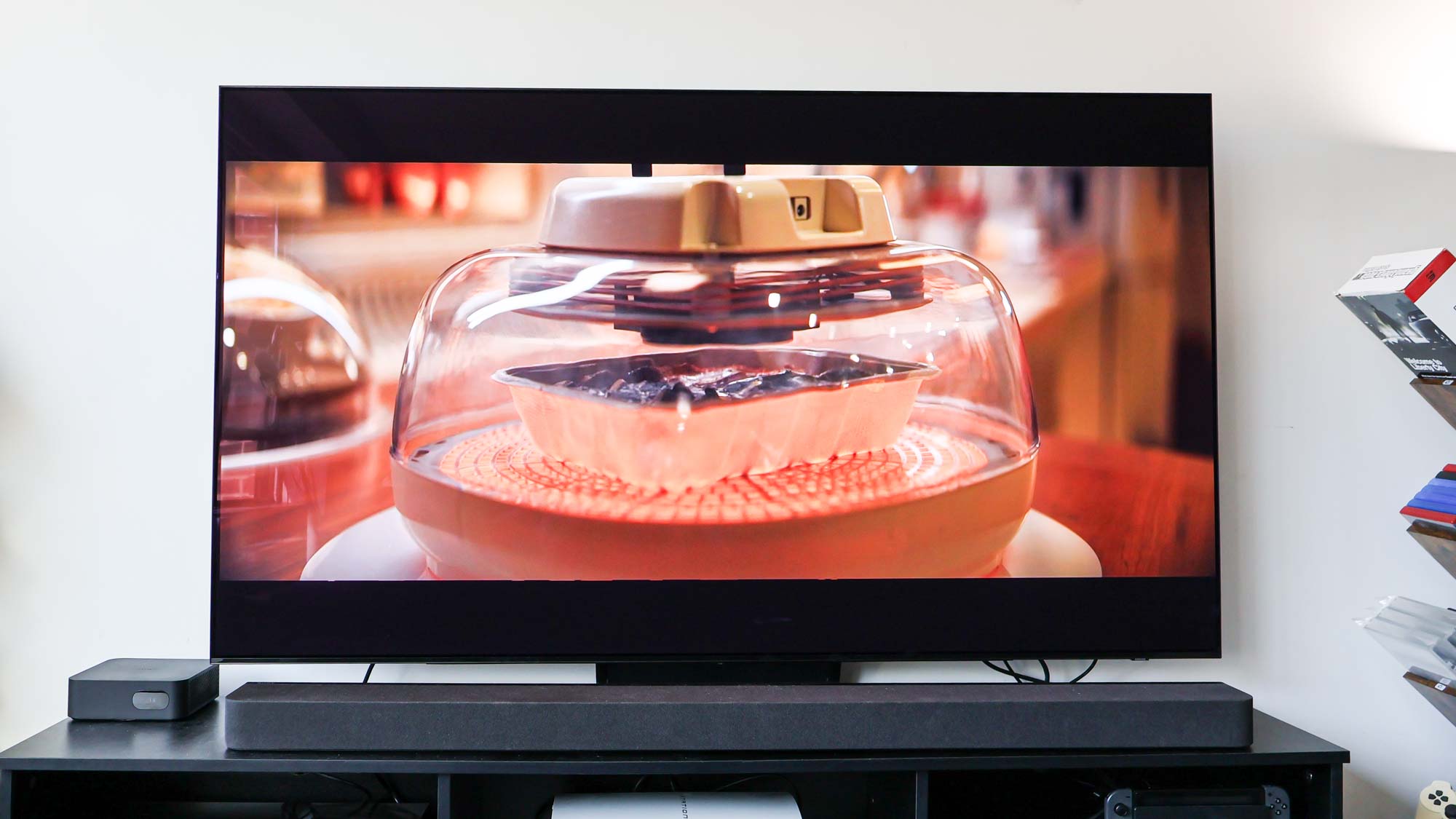
Specifications
Reasons to buy
Reasons to avoid
When looking for the best 65-inch TV under $1,500, I bounce between two models: the LG B4 OLED and the Samsung S90D OLED. The LG B4 OLED is a little cheaper, but I think the Samsung S90D delivers a higher-caliber performance for just a little more.
By now, you know what to expect from an OLED TV. But what I don't think you'll expect from this OLED TV is just how colorful it is. In our testing labs we measure how vivid colors can get on a TV (it's measured in % of a color gamut) and the S90D absolutely blows anything and everything at this price point away. The UHDA-P3 color gamut is the industry standard for HDR, and the S90D covers 99.95% of it.
Besides its color vibrancy, the S90D delivers exceptional gaming performance. Its input latency (the time it takes for an external device's signal to reach the screen) is 9.2ms in game mode. Under 10ms is entirely imperceptible, so this is as good as it gets. Sadly, it's missing Dolby Vision support so you can't game in Dolby Vision HDR, but the industry standard HDR10 support is here alongside the more niche HDR10+.
Again the LG B4 OLED isn't a bad choice, but if it were me I'd spend the extra $200 for the show-stopping color vibrancy and higher peak brightness.
Read our full Samsung S90D OLED review.
Best under $1,000
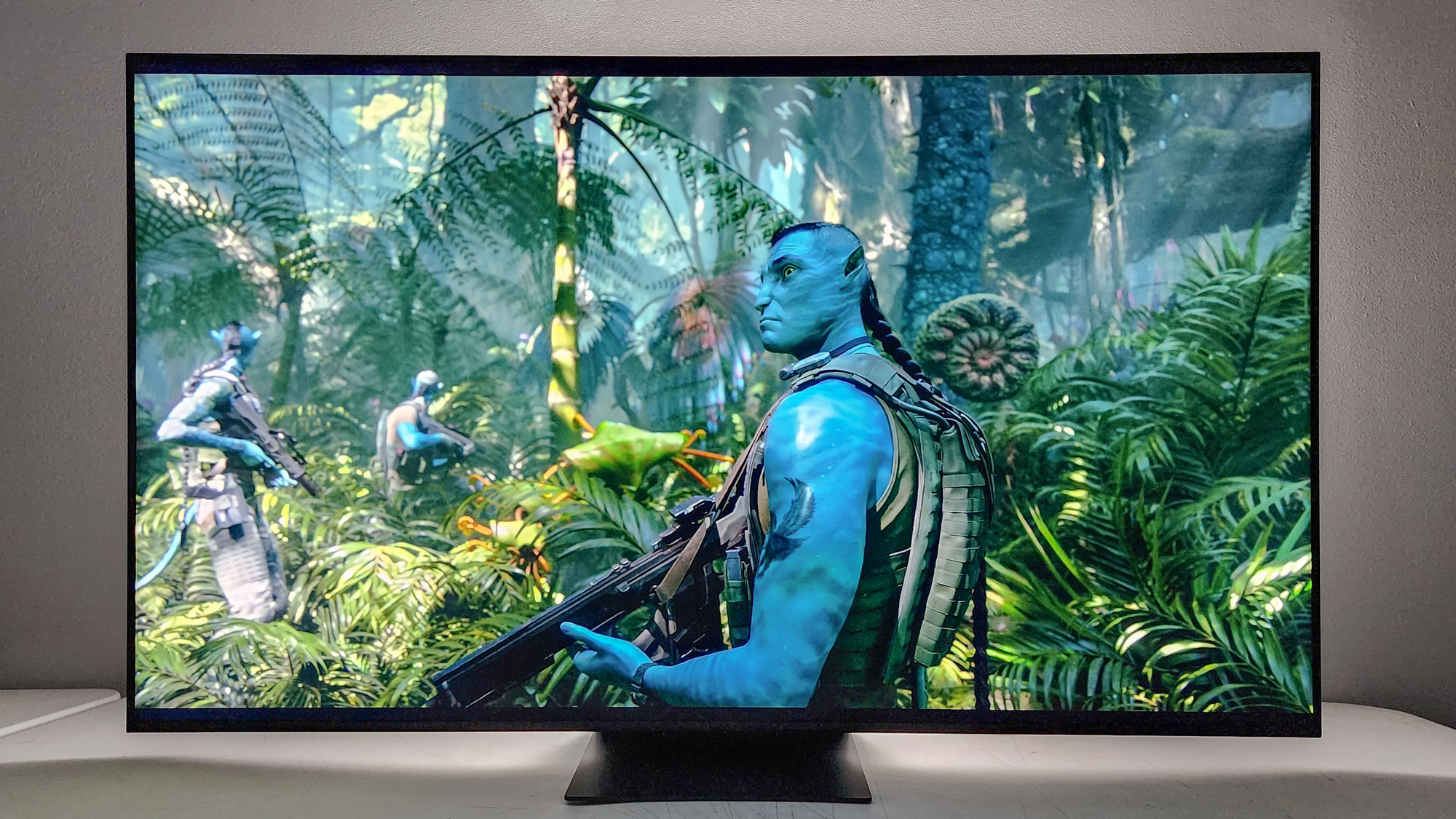
Specifications
Reasons to buy
Reasons to avoid
When you search for the best 65-inch TV under $1,000, you get two options: the Hisense U8N and the TCL QM8. By now, you know which of the two we like better, but I don't think the QM8 is bad TV by any stretch of the imagination.
In most use cases, the Hisense U8N outclasses the QM8. But if you genuinely like watching shows and movies in Vivid mode, boy, the QM8 will blow you away. On its highest settings we measured the peak brightness of the QM8 to be over 5,000 nits. In SDR, you know, the format shows like NCIS and Law and Order are recorded in, the peak brightness sits somewhere around 3,000 nits. This is just absolutely absurd.
And yet, there's a good reason for it.
Let's say you have a room that just has windows everywhere and there's nothing you can do to reduce glare. The QM8 has such high levels of brightness, you can actually see what's happening on the screen despite the glare. No more washed out colors. No more impossible-to-see black details. This is the ultimate bright-room TV.
Would I buy it for my perfectly light-controlled basement home theater? No. But for my upstairs guest room that has oodles of ambient light, the QM8 delivers spectacular highlights in both HDR and SDR modes.
Read out full TCL QM8 Mini-LED review.
Best Mini-LED TV
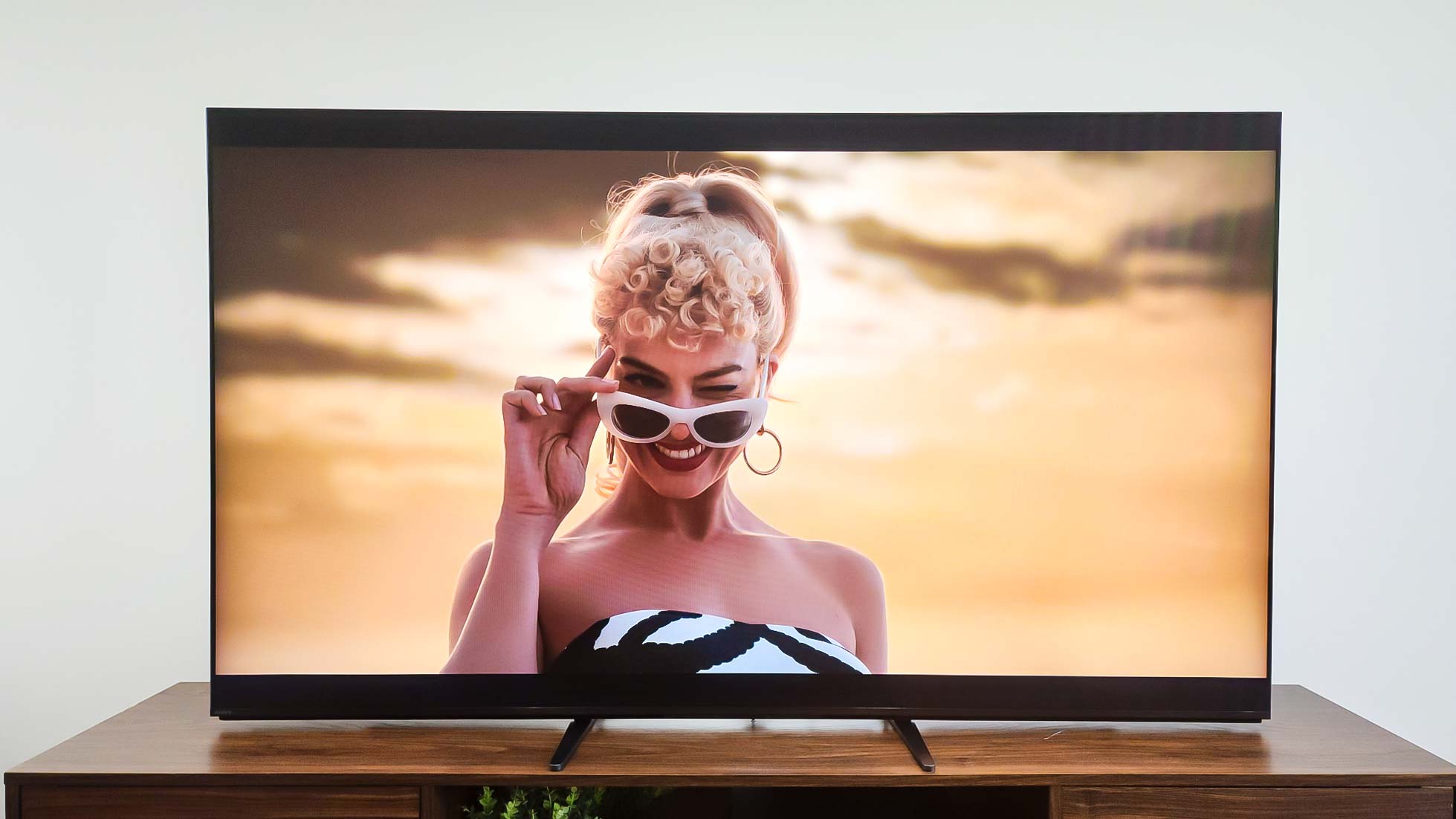
Specifications
Reasons to buy
Reasons to avoid
Every major TV manufacturer makes a Mini-LED TV. Samsung has one (the QN90D). LG has one (LG QNED90). Hisense and TCL both have one on this list. But the Sony Bravia 9 is the ultimate extension of Mini-LED backlight technology.
It's not cheap (the 65-inch Sony Bravia 9 will set you back $2,500) but it pulls out all the stops. It's incredibly bright with a peak brightness of 2713 nits (brighter than almost any other model) and has killer color accuracy. In our labs, we measured the TV's pre-calibration accuracy to be a Delta-E score of 1.7971. (The lower the better.) The only TV to beat it was the LG G4 OLED that's sitting in our number two spot.
It's one of the few TVs I don't own personally, but our reviewer Matthew Murray said it rivals OLED's black levels while pushing the boundaries of brightness. It's not a TV I'd recommend for folks with a wide living room with lots of seats off-center to the TV (go for the G4 OLED instead) but if you're looking for a cinephile-level screen, this is it.
Read our full Sony Bravia 9 TV review.
Best under $500
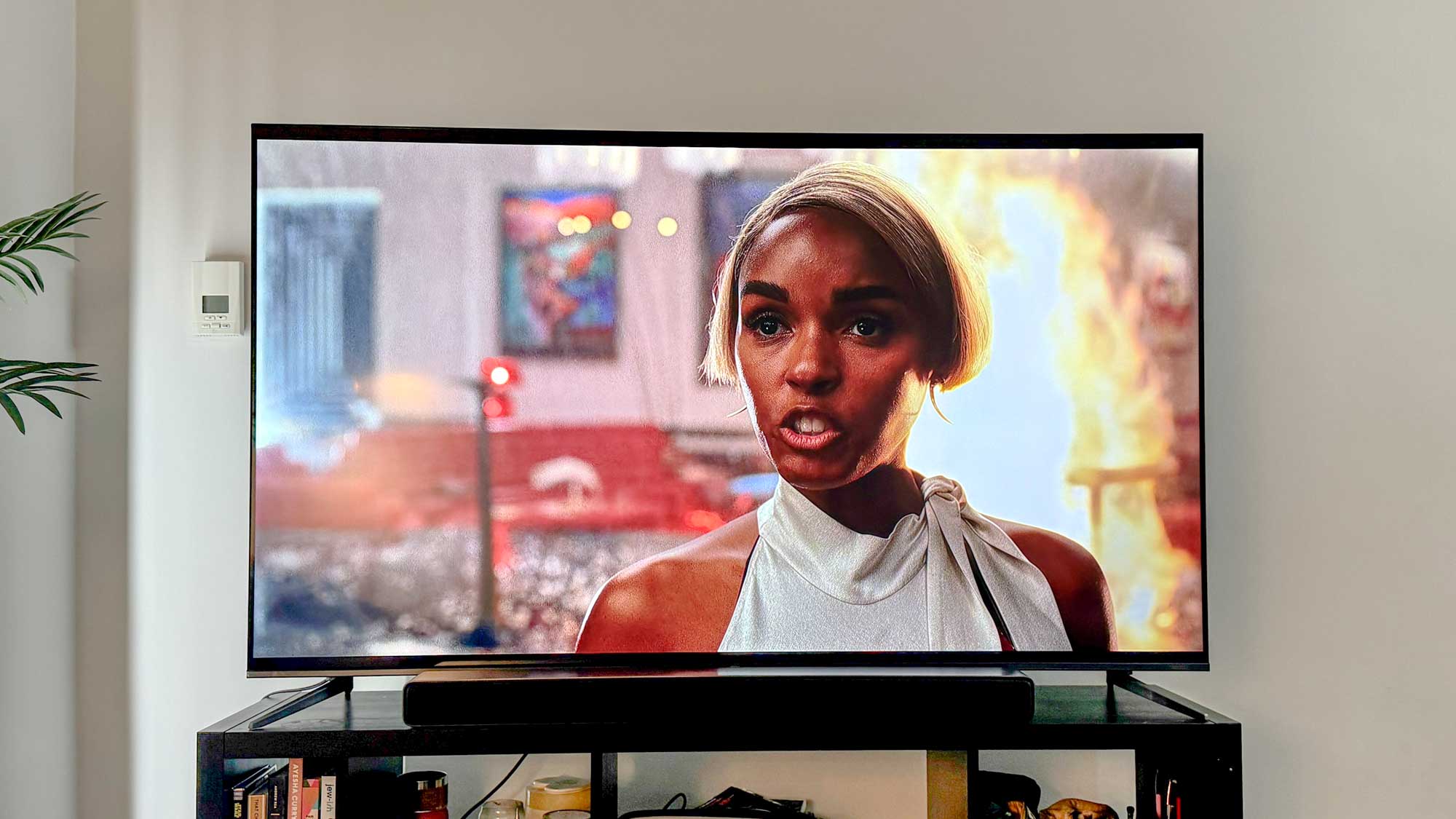
Specifications
Reasons to buy
Reasons to avoid
If you're shopping for a 65-inch TV on a budget, you ought to look into the TCL Q6. It's an affordable TV with wide appeal, thanks to some key features. Right now, the 65-inch version is just $450.
The Q6 won't turn heads the way a brighter, higher-end TV might, but its display leverages quantum dots for better overall brightness and color volume. This is one of the main reasons I'd recommend the Q6 over a more affordable 65-inch TV like the Samsung DU7200. It's not quite cut out for daytime viewing in a heavily sun-soaked room, but it most living spaces should be fairly accommodating for its modest backlight. Regardless of what you're watching — be it cable TV, Netflix, or an over-the-air broadcast — the Q6 looks great, especially in its most accurate picture mode.
The Q6 arrives with the Google TV smart platform baked right into the software — another win for the budget-oriented, set-it-and-forget-it crowd. Google TV is one of our preferred smart platform due to its ease of use and wide selection of downloadable apps.
Compared to a mid-range or high-end TV, there aren't as many gaming-related features on board, but the TCL Q6 nevertheless supports ALLM and VRR. And, although 4K gaming at 120Hz is out of the question, the Q6 is capable of showcasing 1080p and 1440p content at 120Hz, which could be nifty for semi-serious gamers.
If you want a better gaming TV (or just a better-performing 65-inch TV overall) and you still want to walk away feeling like you got a bargain, I recommend springing for the TCL QM8. Otherwise, the Q6 is a great all-around TV at a perfectly reasonable price.
Read our full TCL Q6 QLED TV review.
Best 65-inch TV Test Results
Best 65-inch TV test results
TV | HDR peak brightness (10% window) | Delta-E (lower is better) | Rec. 2020 gamut coverage | Input lag |
Hisense U8N | 3,296 nits | 3.2 | 82.07% | 13.1ms |
LG G4 | 1,487 nits | 1.4 | 72.91% | 9.2ms |
Sony Bravia 9 | 2,713 nits | 1.7 | 78.02% | 17ms |
Samsung S90D | 1,187 nits | 1.2 | 79.85% | 9.6ms |
TCL QM8 | 5,085 nits | 12.5 | 73.86% | 8.9ms |
TCL Q6 | 498 nits | 2.1 | 68.92% | 16.1ms |
Other 65-inch TVs we tested
LG C4 OLED (★★★★☆)
The LG C4 is one of the best OLED TVs of the year. It costs significantly less than the aforementioned G4, but you'll still enjoy an incredible picture with decent HDR brightness (around 1,000 nits). It also offers a comparable selection of gaming features as the G4, which is a huge point in its favor.
Read our full LG C4 OLED review.
Panasonic Z95A OLED (★★★★☆½)
Panasonic's take on a high-end, 65-inch OLED TV is impressive. The Z95A delivers sensational brightness for an OLED TV, thanks in part to its panel, which features MLA display technology. The Z95A also comes with a helpful selection of gaming features, including HDMI 2.1 and support for 4K, 144Hz gaming.
Read our full Panasonic Z95A OLED review.
Sony Bravia 8 OLED (★★★★☆)
The newest Sony OLED is the Bravia 8, and while we found it to be relatively dim compared to competitive OLED TVs like the LG C4, there's no denying that Sony's upscaling and overall picture processing make it an attractive option for viewers with a discerning eye. It's worth noting that it's gaming features aren't as robust as the C4, however.
Read our full Sony Bravia 8 OLED review.
Samsung The Frame TV (★★★★☆)
Known mostly for its art-deco pizzazz, Samsung's The Frame is still a stellar choice at 65-inch. It offers a dynamic refresh rate with solid sound, but lacks key enhancements, like improved viewing angles. It's one of the few 65-inch TVs you can buy that's built to look as stellar as the content on-screen, which says a lot when you're spending upwards of $1,000 on a new display.
Read the full Samsung The Frame TV review.
TCL QM7K QD Mini-LED TV(★★★★☆)
The improved QM7 in TCL's 2025 lineup is a stellar new Mini-LED TV with a powerful set of features built for gamers. Given this, we loved its VRR capabilities and color handling. Plus, as a Mini-LED TV it's got incredible HDR brightness. It might not be among the best 65-inch TVs proper, but it does make for a grand budget option for gamers.
Read the full TCL QM7K QD-Mini LED TV review.
TCL QM6K QD Mini-LED TV(★★★★☆)
When looking for a 65-inch TV, price is an important factor and the QM6K is quite the catch. In our review, we praised its sleek design and incredible picture quality. It even has a 40W speaker, which is quite impressive and comes with Dolby Vision IQ HDR support. Feature-wise, the QM6K is packed and made all the better with an often-discounted price at just $750.
Read the full TCL QM6K QD-Mini LED TV review.
Panasonic W95A Mini-LED TV (★★★★☆)
The Panasonic W95A is a Mini-LED with some serious performance chops. In our tests, the W95A impressed us with HDR highlights approaching 1,500 nits and fantastic out-of-the-box color accuracy. We weren't that jazzed about its built-in, Amazon-based Fire TV smart platform, but in terms of performance and gaming support, the W95A is up there with the best Mini-LED TVs in recent years.
Read the full Panasonic W95A Mini-LED TV review.
Hisense U7N (★★★☆☆½)
This is Hisense's mid-range Mini-LED TV from 2024. It's not as bright as the higher-end U8N (nor is its local dimming as capable), but it's a much better option for gamers and home theater enthusiasts on a budget than the 65-inch TCL Q6.
Read our full Hisense U7N Min-LED TV review.
Hisense U6N Mini-LED TV (★★★☆☆½)
Here's another 65-inch TV built to be a budget powerhouse. The Hisense U6N initially launched in 2024, but it still is a great pick with tons of smart features and HDR support. It does have some subpar brightness at 515 nits, which most OLEDs beat these days, but at $499 for its 65-inch model, you get quite the suite of features.
Read the full Hisense U6N Mini LED TV review.
How to choose the best 65-inch TV for you
If you're in the market for a new TV, you'll want to consider a few factors before you spend your money. Our TV buying guide breaks down the fine details of what features matter and what distinguishes a great TV from one that's just okay. For a 65-inch set we strongly recommend going with 4K resolution. There are a few older 1080p models still available, but they simply aren't a good value today. And while 8K TVs are hitting the market, it will still be some time before 8K resolution gets mainstream support.
Size and space: For a 65-inch 4K TV you'll want to sit between 8 to 9 feet from the screen to hit the sweet spot of being close enough to enjoy all the sharp details, but not so close that you'll be able to make out the pixels that make up the picture.
Price: A basic 65-inch 4K smart TV will range between $500 and over $3,000, depending on how much you're willing to spend on performance and features. The TCL Q6, our current pick for the best budget TV, is priced right around $500 for a 65-inch model, while the LG G4, our pick for the best OLED TV, is priced at around $2,300.
Features: For the best picture, we recommend getting a set that offers high dynamic range (HDR) support. HDR10 is the base standard, while Dolby Vision is a higher-caliber format, and we recommend opting for Dolby Vision support when you have the choice. To learn more about whether or not this format is essential for your purposes, check out our guide on the importance of Dolby Vision.
Ports: Port selection ought to be a primary consideration. More HDMI ports will let you connect more devices, like game consoles and satellite boxes. Typically, TVs offer four HDMI ports, but budget-oriented models (like the TCL Q6) often arrive with just three. In addition, if you have a soundbar, you'll probably want to connect it using an HDMI port with eARC (a standard feature on almost all TVs). Lastly, TVs use one or two HDMI formats: HDMI 2.0 and HDMI 2.1. Mid-range and higher-end TVs will offer at least two HDMI 2.1 inputs, which will unlock several enhancements, most of which are gaming-centric. To learn more about these HDMI types, check out our HDMI 2.1 explainer.
Software: For people who don't intend to use one of their TV's HDMI ports for a dedicated streaming device, finding a reliable smart TV platform is essential. Companies like Samsung and LG use their own proprietary software, but many use more broadly available software, like Google TV and Roku. The biggest issue is app selection, as some specific apps you may want won't be available on every smart TV platform, or there may be a months-long delay for a new service to come to some smart TVs after launching on others.
But you'll also want to look into more advanced features, like smart home control, video conferencing capability, and other features that may be brand exclusive, or at least unevenly distributed between premium and budget sets.
How we test the best 65-inch TVs
When it comes to evaluating TVs, we're serious about getting it right. That's why every TV we review is put through a rigorous testing process that measures key standards of picture quality and performance.
Our lab tests involve testing for color accuracy and color gamut using an X-Rite i1 Pro spectrophotometer, an AccuPel DVG-5000 video test pattern generator and SpectraCal CalMAN Ultimate calibration software. These tools are relied on by professional calibrators throughout the industry, and we've paired them with custom workflows to gather the information needed for our reviews. These measurements are taken first in standard mode to simulate the average watching experience, and then taken again in other display modes to find the top color and brightness performance offered by each set.
Our testing measures contrast and maximum brightness, as well as lag time. Using a Leo Bodnar Video Signal Input Lag Tester to test video signal delay, we time how long it takes for content to travel from the original video source to the screen, measured to the millisecond. Shorter response times equate with faster gaming performance, letting us objectively know which TVs are better for gaming.
We use all of these objective test results to make comparisons about quality and performance between different TVs, but our evaluation doesn't end there. We also spend hours with each set, watching shows and movies, and using carefully selected video samples to highlight the strengths and weaknesses of each set and help us tell you which TVs look and sound the best in a real home viewing environment.
And there's more to today's TVs than just viewing, so we also check out the smart TV functions and evaluate everything from the interface to the remote control design. This lets our reviews speak to the technical capabilities of today's smart TVs and how they fit into your connected home.
Sign up to get the BEST of Tom's Guide direct to your inbox.
Get instant access to breaking news, the hottest reviews, great deals and helpful tips.

Michael Desjardin is a Senior Editor for TVs at Tom's Guide. He's been testing and tinkering with TVs professionally for over a decade, previously for Reviewed and USA Today. Michael graduated from Emerson College where he studied media production and screenwriting. He loves cooking, zoning out to ambient music, and getting way too invested in the Red Sox. He considers himself living proof that TV doesn't necessarily rot your brain.
- Ryan EppsStaff Writer
